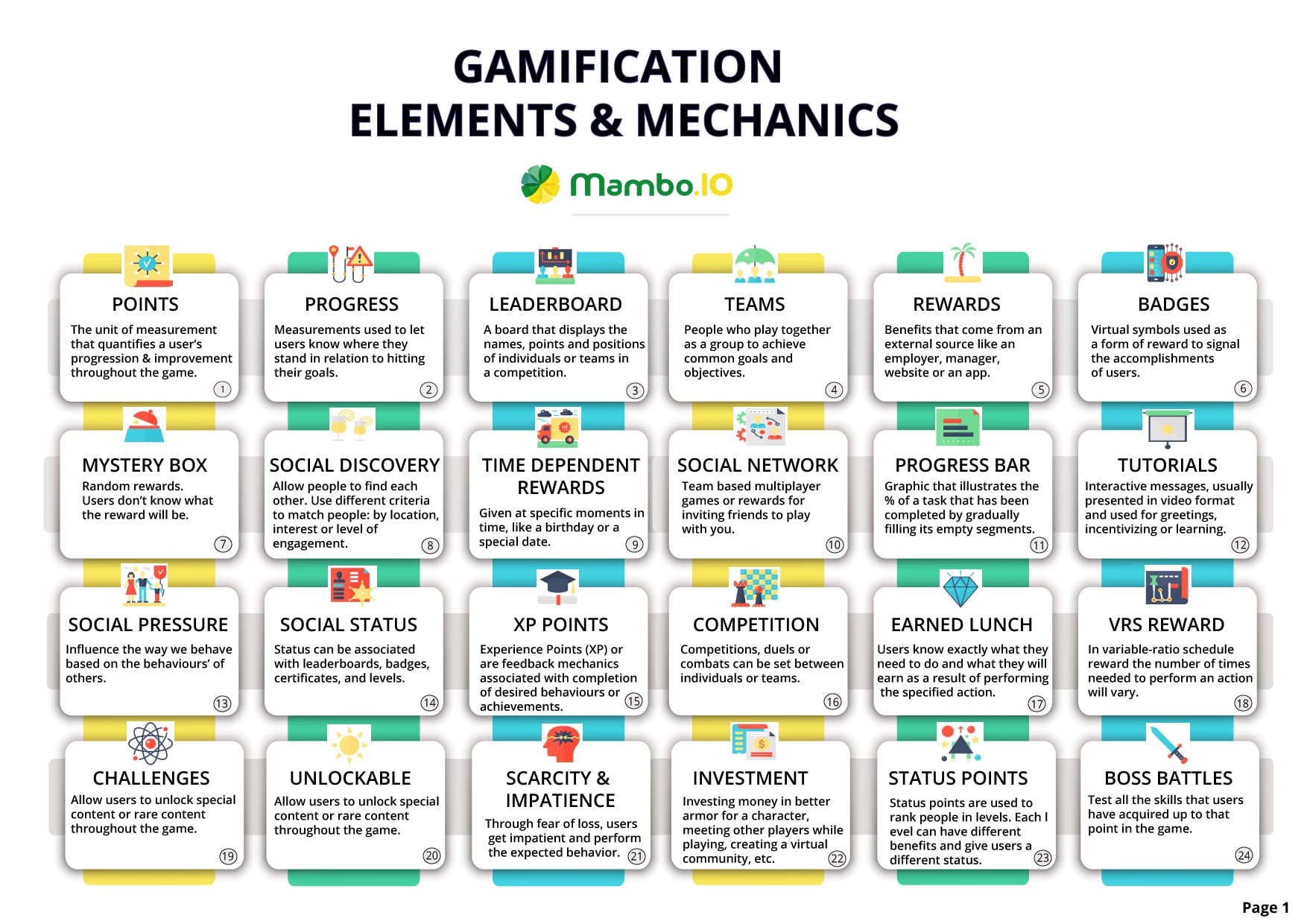Increase User Engagement: Tried And Tested Strategies
To increase user engagement, there are many things to consider.
If you’re having problems with user engagement, one of the many reasons can be the decreasing user attention span. Users have a variety of entertainment sources nowadays, making it difficult for most brands to stand out.
But there is no need to fret because there are proven strategies that will help you increase user engagement.
Before we dig into these strategies, you must understand what makes user engagement important.
Table of Contents
- Why does user engagement matter?
- User engagement vs customer engagement
- What is website user engagement?
- How to measure website user engagement
- How to measure app user engagement
- Strategies to increase user engagement on your website
- Strategies to increase user engagement in your app
- Conclusion
- Machine Learning In Finance: 12 Essential Applications
- How To Create Interactive Compliance Training For Bank Employees
- How Fintech Apps Are Using Gamification To Increase User Engagement
- Top Gamification Companies for Employee & Customer Engagement
Download your free
“Gamification Guide”
Get your PDF now and start transforming your approach to digital engagement!
Why does user engagement matter?
Engaged users are your company’s biggest asset. Customers that are satisfied with the services you offer will eventually be loyal to your brand. This will give you a competitive edge in the market and ensure your business growth.
Here are some of the main reasons why you need to increase user engagement:
#1. Customer retention
Enhancing user engagement increases the probability that your customers will continue advocating your products. This will give you an increased customer retention rate.
#2. Revenue growth
As mentioned, engaged users are your company’s biggest asset because they are more likely to subscribe to your services. More engaged users mean more clicks, shares, and in-app purchases. And active customers contribute directly to your revenue.
#3. Brand loyalty
When you increase user engagement, you build connections and relationships with your customers. This connection will eventually result in brand loyalty. You can trust that your users will choose your brand for future purchases over your competitors.
#4. Reduced churn rate
Not only will you establish a connection with your customers, but you will also be able to reduce their churn rate. Once you increase user engagement, there will be a smaller chance for them to stop using your product. A lower churn rate can have a positive impact on your customer lifecycle, directly affecting your business revenue.
#5. Online visibility
Having high user engagement, especially on social media platforms and other mobile applications, will lead to increased online exposure. Online visibility will generate an improved ranking in search engines and drive more traffic to your website and apps.
#6. Competitive advantage
Increased user engagement can help you stand out, giving you a competitive edge. Engaged users will likely become advocates willing to promote your brand and increase awareness. You can use this to your advantage and develop a product that suits your audience’ liking.
Download your free
“108 Gamification Elements and Mechanics”
Get your cheat sheet and have a quick reference at your fingertips!
User engagement vs customer engagement
User engagement and customer engagement share almost the same meaning. However, even though they both talk about engagement and interaction, these two are different from one another.
User engagement is a general term for any interaction with your product. It tackles the level of involvement and interest your users have with your product and directly reflects their satisfaction. Customer engagement, however, focuses on building a relationship and emotional connection with users.
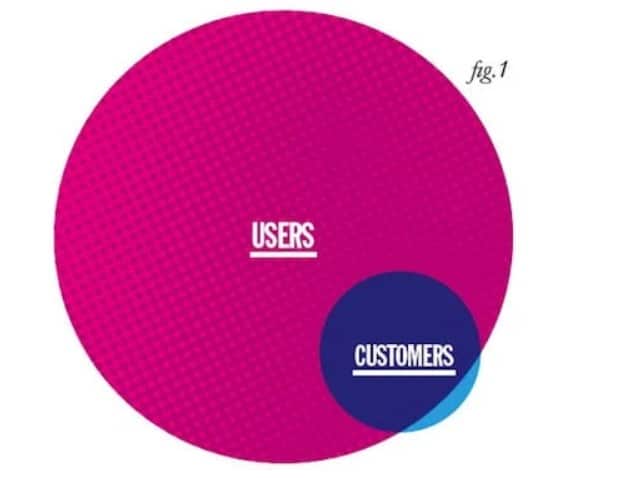
Source: izooto
If a business wants to improve user engagement, it will aim to increase the time spent on its product through development. While a business that wants to increase customer engagement will focus on devising excellent communication to boost customer experience.
All in all, user engagement focuses on product development to give users the satisfaction they seek.
One way to increase user engagement is to understand website and app engagement.
What is website user engagement?
Website engagement, by definition, is how good your brand is at retaining the interest of your users. It measures your product value through downloads, shares, clicks, and any activity your customers do while on your website.
It mainly focuses on the time your users spend and interacts with your product. The higher your website user engagement is, the more loyal your customers are.
What is app user engagement?
App user engagement is how customers connect with mobile applications. This engagement is measured through different metrics that ultimately show how customers interact with your app. It measures the frequency of interaction, how long they spend on the app, and how many in-app engagements they make.
App user engagement is essential because it helps businesses understand user behaviour further. This will then lead them to improve their user’s overall experience. Through monitoring app user engagement, you will be able to improve your product and increase user engagement.
How to measure website user engagement
To help you increase user engagement, there are user engagement metrics to target. Including:
#1. Pageviews
Website pageviews measure the times a potential customer has viewed pages on your website.
Google Analytics is the most popular web tool to help you track user engagement. It can provide real-time data to help you monitor how many pageviews you have at any given time.

Source: Google Analytics
Remember that analytical tools count each page refresh as a new view, which can sometimes be misleading. Regardless, pageviews are still a reliable indicator of website user engagement.
#2. Time on page
The average user spends 5 minutes when consuming a 1,500-word article. If a user spends 5 minutes on your website, something about your content catches their attention.
Your goal is to keep your users invested and engaged in your website. When the users spend a long time on your page, it means you have high engagement. When users click your link, the analytics tool will start measuring their time on the page.
#3. Bounce rate
Bounce rate refers to how quickly a person leaves your page. This is measured by single-page sessions divided by the entire session duration.
Interestingly, time on page and bounce rate are directly impacting each other. A high bounce rate means that the user’s time spent is low.
A high bounce rate is a direct reflection of a poor user experience. An increased bounce rate means you must improve your website elements or create relevant content to keep users engaged.
#4. Conversion rate
Website conversion rate refers to the positive actions your users take on your website. It can be signing up for a newsletter, leaving a review, or purchasing.
Conversion rate can measure the rate of potential customers that are converted to actual paying users. A high conversion rate indicates that you have a healthy website that’s able to maintain the interest of your users.
How to measure app user engagement
#1. Session length
Same with website user engagement, it’s also important to know how much time your users spend in your mobile app. Measuring session length will give you an insight into whether or not your users are enjoying your product.
Have you noticed a significant decrease in session length even though your app offers a variety of content and features? This may indicate that your app has navigational issues. To solve this, consider checking the flow of your user experience.
If session length decreases after an update, it may be time to recheck the quality of your content.
#2. Frequency of use
Measuring the frequency of use will help you visualise how your users see your app.
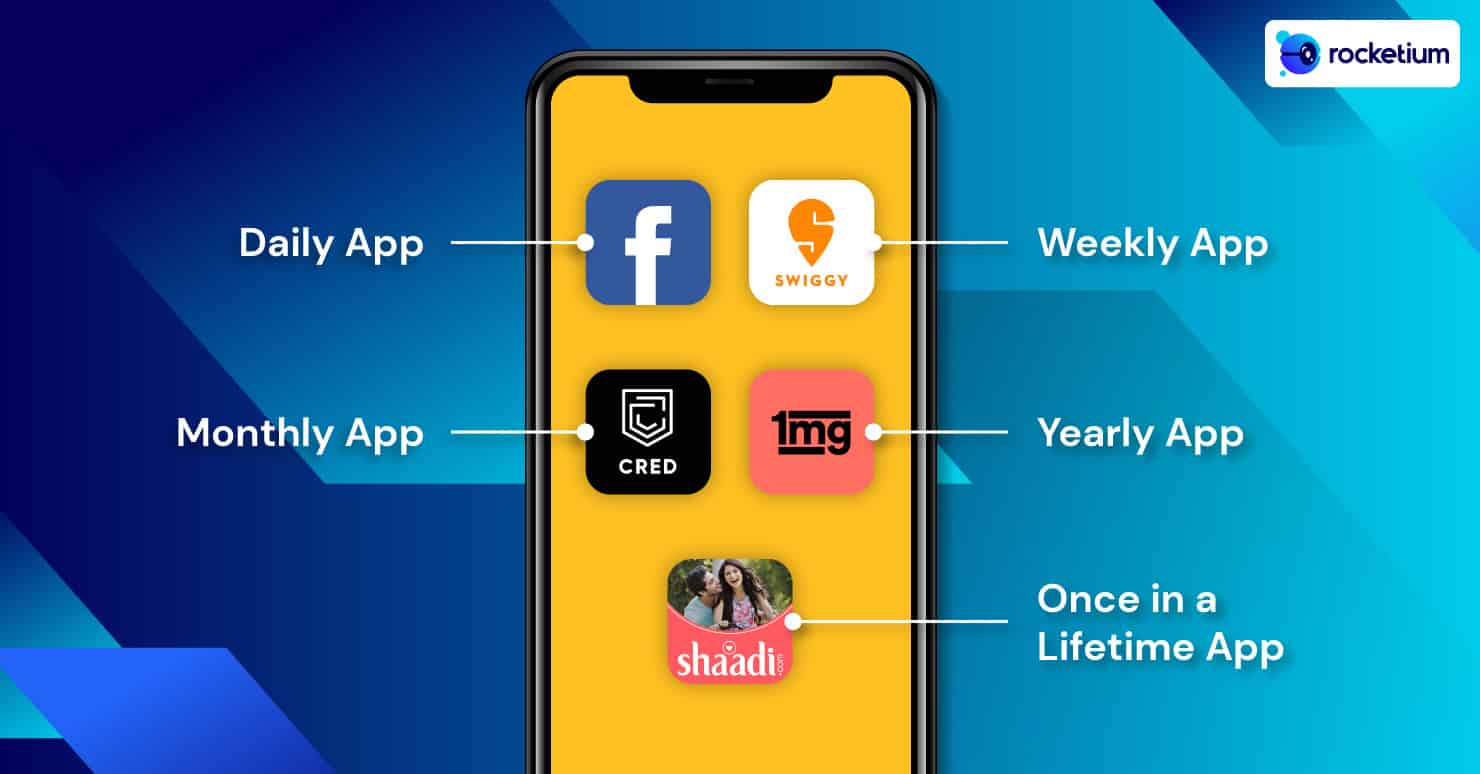
Source: rocketium
By measuring the frequency of use, you can determine who your light and heavy users are. You can use this information to segment your users and observe their behaviours and understand what needs to be improved.
#3. Exit rate
Measuring your exit rate helps you identify if there are problems with your app. You can determine at what point exactly your users quit your app. This data can help you determine which pages your apps tend to close and correct any irregularities.
Strategies to increase user engagement on your website
To increase user engagement, you need to know how to continuously pique your users’ interest. Some companies continually engage with their users by uploading quality content they know their audience is looking for. Some regularly post things to look out for to keep their customers excited about new products and updates.
Here are some tried and tested strategies to increase user engagement:
#1. Make it personal
You may already be doing this user engagement strategy by putting your user’s first name in your email marketing campaigns. But you can go a step further than that.
Personalisation can be your ticket to capturing and retaining your customer’s attention. If you offer something generic, like what most of your competitors offer, you may not gain the results you want.
Offering a customised onboarding experience for new users is the first step to making your customer’s experience personal. This will also deepen your relationship and connection with them.
#2. Create interactive and engaging content
One key component for keeping your customer’s attention is to develop stimulating content and features that provide an interesting experience.
As discussed previously, the average person’s attention span has decreased from 12 seconds to 8 seconds at a time. So what does this mean to user engagement? It means you must be more creative in developing interactive and engaging content.
You can accomplish this by learning what your audience loves about your brand. You can create video content and blog posts and gamify the user experience.
#3. Utilise video tutorials
One of the most effective ways to increase user engagement is through video tutorials. Think of topics and educational materials you can provide to your users. Brainstorm with your product team to determine which parts of the user journey can be improved with a video tutorial.
Although PDFs and eBooks are the most common source of knowledge used by SaaS companies, they can’t be the most effective. It takes more effort to absorb written material than a visual one, not to mention more time-consuming. You can use video tutorials to replace textual content as it’s easier to consume and more appealing to users.
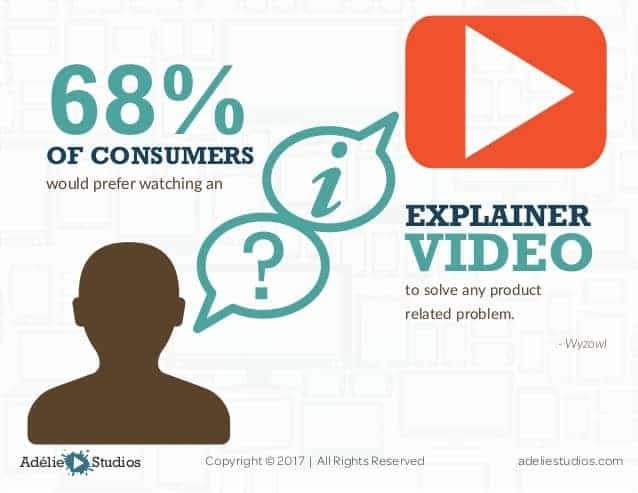
Source: explainerd
You can also use video materials to build a connection with your audience. Through effective storytelling, you can make a good impression and establish the flow of user experience.
#4. Engage your loyal users
Engaging with your loyal users can be anything. You can launch special promotions or send gift certificates to repeat customers. You can also let them be the first to know about new releases or company updates.
Utilise them in your product’s beta-testing phase because their feedback can help you perfect your product development process.
Loving your customers will prove to be a great investment in your business. Why? Because your loyal users will be your brand advocates, spreading their good experiences with your brand through reviews and testimonials.
#5. Upsell existing users
Did you know customer acquisition costs almost 5x more than retaining existing users? That’s why you need to increase your focus on your engage users. After acquiring new customers, it’s crucial that you still consider them as your target audience.
Your existing users should be the first people to know about new product launches and development. When you upsell your existing customers, you can reduce customer churn and keep them returning for more.
Strategies to increase user engagement in your app
#1. Design a flawless app onboarding flow
One of the reasons your users quit your app immediately after signing up is that it’s difficult to figure out. Designing a flawless onboarding flow for your new users will eliminate this problem. Establish a good first impression while lowering all the barriers your users may encounter when interacting with your app.
Here are some ways you can design a flawless onboarding flow:
- Make the onboarding process simple by reducing the steps to creating an account.
- Avoid information overload by gradually introducing each feature with context on how it can help the users navigate the app.
- Upload video tutorials to virtually assist the users with the best way to interact with the app.
#2. Use gamification to increase user engagement
Gamification is the process of implementing game elements in a non-game environment. By gamifying user activities, you can effectively increase user engagement.
Here’s how gamification can increase user engagement:
- Behaviour reinforcement – Using gamification to enhance user experience allows you to reward certain user behaviours. Regardless if it’s in the form of points or badges, rewards have the power to create an enjoyable environment. This will result in more engaged users that are willing to come back for more.
- Make users feel in control – If they are in charge of their next steps, your customers are more likely to enjoy the experience.
- Encourage competition – Adding healthy competition to their customer journey gives them a reason to be committed to your app. Because of their desire to outrank their friends, their engagement and experience will certainly be enhanced.
- Contests and giveaways – Giving prizes for every goal achieved is the best way to increase user engagement. For example, you can reward purchases, referrals, shares, and social media likes to encourage your users to share and spread brand awareness.
#3. Personalised in-app messages
Nothing is more effective in increasing user engagement than personalised campaigns and in-app messages. According to research, personalised messages increase customer retention by up to 74% within their first 28 days in the app.
Personalised in-app messages will help you increase user engagement by keeping your users engaged and informed while using your app.
#4. Make it social
Allowing users to interact with their friends within the app is a fun way to increase user engagement. You can develop an in-app community where they can collaborate and have healthy competition.
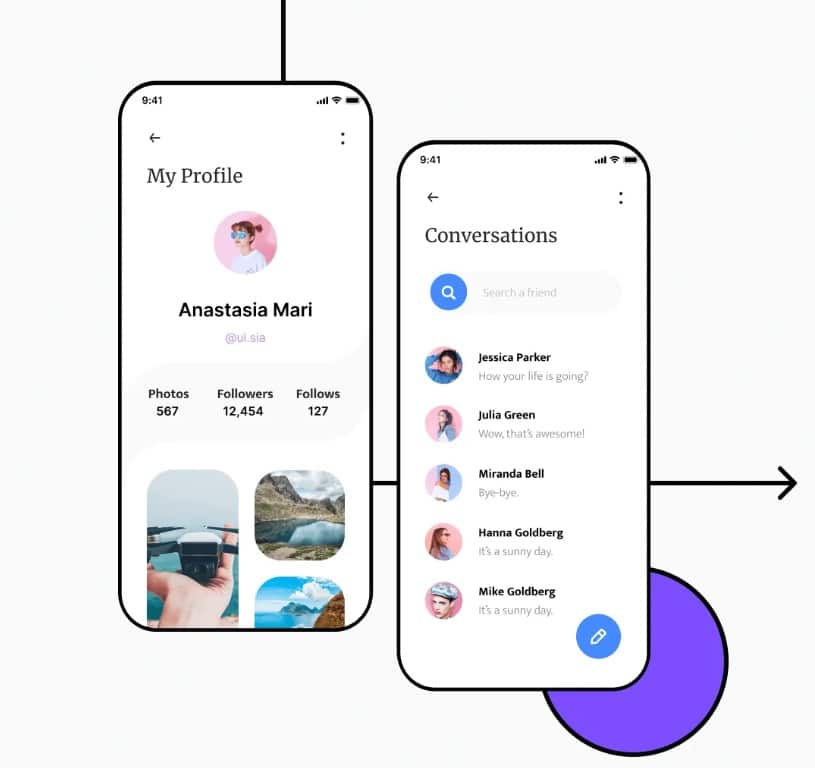
Source: builder
Design a section in your app where your users can have conversations with other users. You can also include a call feature to further the experience and create a safe space across your platform.
#5. Showcase your app features
If your mobile app has a lot of functions, some users may need help to maximise their experience with it. Showcasing its interesting features in your app store description and onboarding sequence will entice your users to try it out.
You can use in-app messaging to guide new users through several functions and motivate them to explore. The more they discover your app, the more they will get hooked and check out features they’ve never used.
Conclusion
Attracting new users is important, but keeping your users engaged is more beneficial to your business. Lucky for you, there are a lot of opportunities to increase user engagement on both your website and app.
When it comes down to it, implementing an enjoyable environment is the most effective way of keeping your users engaged. It’s all about giving relevant and timely information and providing users with opportunities to interact with your content.
Be creative, focus on providing the best experience, and regularly measure your results. It’s as simple as that.
If you’re ready to increase user engagement with Gamification, our experts in Mambo are excited to give you the solutions you are looking for. Book a demo today!
Latest Posts
Machine Learning In Finance: 12 Essential Applications
The impact of machine learning on finance is significant. Thanks to this technology, financial institutions are now equipped to make efficient decisions. Through the analysis of data sets, machine learning […]
How To Create Interactive Compliance Training For Bank Employees
Banking compliance training isn’t just another task. It’s the stage where everything else performs. Banks must navigate a myriad of regulations and laws. After all, this is a trust-driven, high-stakes […]
How Fintech Apps Are Using Gamification To Increase User Engagement
Discover how gamification in fintech is revolutionizing financial engagement, making banking fun & boosting user loyalty.


